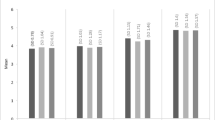Abstract
The Sleeping Beauty problem is test stone for theories about self- locating belief, i.e. theories about how we should reason when data or theories contain indexical information. Opinion on this problem is split between two camps, those who defend the “1/2 view” and those who advocate the “1/3 view”. I argue that both these positions are mistaken. Instead, I propose a new “hybrid” model, which avoids the faults of the standard views while retaining their attractive properties. This model appears to violate Bayesian conditionalization, but I argue that this is not the case. By paying close attention to the details of conditionalization in contexts where indexical information is relevant, we discover that the hybrid model is in fact consistent with Bayesian kinematics. If the proposed model is correct, there are important lessons for the study of self-location, observation selection theory, and anthropic reasoning.
Similar content being viewed by others
References
Arntzenius F. (2002). Reflections on Sleeping Beauty. Analysis 62(1): 53–62
Bostrom N. (2001). The Doomsday argument, Adam & Eve, UN++, and Quantum Joe. Synthese 127(3): 359–387
Bostrom N. (2002a). Anthropic Bias: Observation Selection Effects in Science and Philosophy. Routledge, New York.
Bostrom N. (2002b). Self-locating belief in big worlds: cosmology’s missing link to observation. Journal of Philosophy 99(12): 607–623
Bostrom N. (2003). The mysteries of self-locating belief and anthropic reasoning. Harvard Review of Philosophy 11, 59–74
Dorr C. (2002). Sleeping beauty: in defense of Elga. Analysis 62(4): 292–296
Elga A. (2000). Self-locating belief and the sleeping beauty problem. Analysis 60(2): 143–147
Elga A. (2004). Defeating Dr. Evil with self-locating belief. Philosophy and Phenomenological Research, 69(2).
Hitchcock C. (2004). Beauty and the bets. Synthese 139, 405–420
Kierland B., Monton B. (2005). Minimizing inaccuracy for self-locating belief. Philosophy and Phenomenological Research 70(2): 384–395
Lewis D. (1980). A subjectivist guide to objective chance. In: Jeffrey R.C. (eds). Studies in Inductive Logic and Probability. University of California Press, Berkeley, p. 2
Lewis D. (1994). Humean supervenience debugged. Mind 103(412): 473–490
Lewis D. (2001). Sleeping beauty: reply to Elga. Analysis 61(271): 171–176
Mellor H. (1971). The Matter of Chance. Cambridge University Press, Cambridge
Monton B. (2002). Sleeping beauty and the forgetful Bayesian. Analysis 62(1): 47–53
van Fraassen B. (1984). Belief and the will. Journal of Philosophy 81, 235–256
Weintraub R. (2004). Sleeping beauty: a simple solution. Analysis 64(1): 8–10
Author information
Authors and Affiliations
Corresponding author
Rights and permissions
About this article
Cite this article
Bostrom, N. Sleeping Beauty and Self-location: A Hybrid Model. Synthese 157, 59–78 (2007). https://doi.org/10.1007/s11229-006-9010-7
Received:
Accepted:
Published:
Issue Date:
DOI: https://doi.org/10.1007/s11229-006-9010-7



